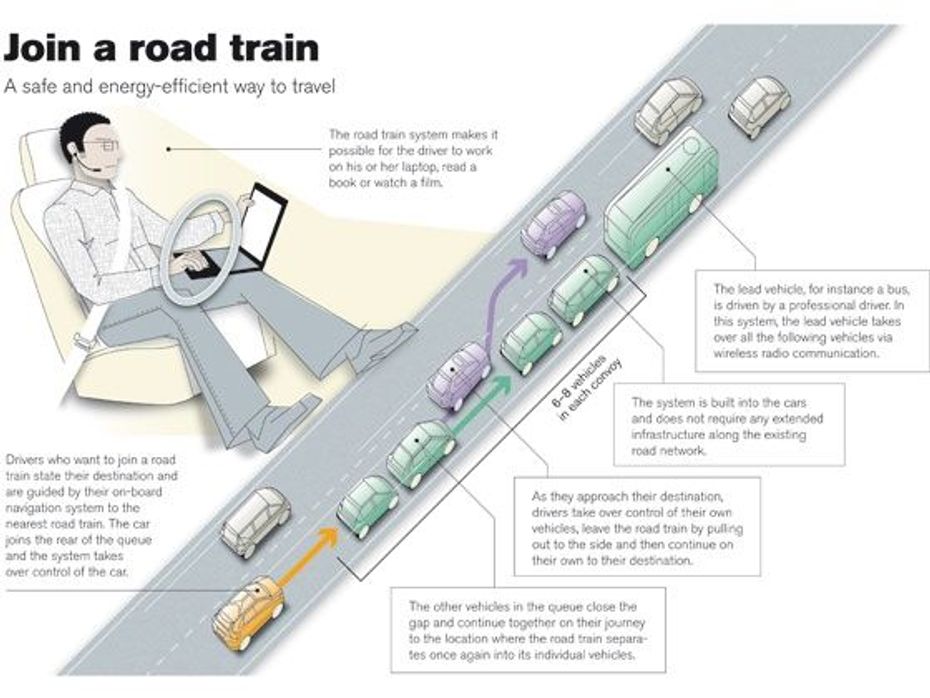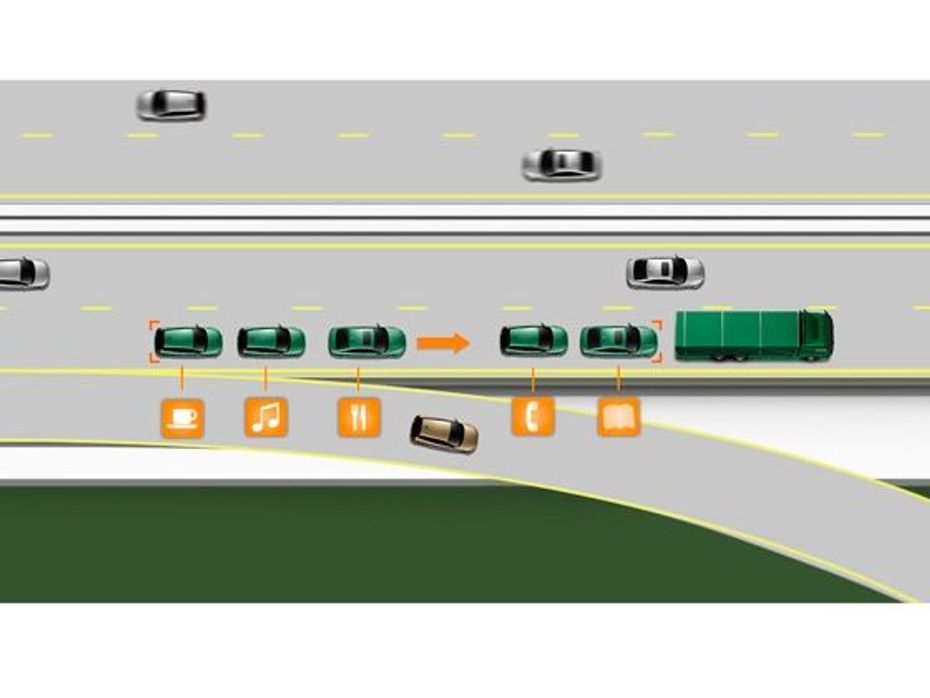
Volvo to launch S60 T6 Petrol in June
- Apr 20, 2015
- Views : 16704


It is nothing but the sheer brilliance of automotive engineering that has brought the world closer, and as we live each day well settled into a life where going from point A to B in safety is a simple four wheeled affair (even two would do in most cases), the technology that drives these machines is not only going greener for the sake of the environment, but as we have seen in recent demonstrations of the SARTRE project is also pushing the brink of effortless road travel to levels that up until now only seemed possible in a high budget sci-fi thriller.
Part funded by the European Commission under the Framework 7 programme, the Safe Road Trains for the Environment (SARTRE) project has been underway since 2009, and in a recent test run on a public motorway in Spain has successfully demonstrated that ideas such as vehicle platooning and the concept of automated driving aren’t as farfetched solutions to plausible and practical motoring as perceived so far.
Vehicle platooning as envisaged by the SARTRE project is a convoy of vehicles, where a trained professional driving a lead vehicle controls the line of a fleet of vehicles behind him. By adding in wireless communication, the vehicles in the platoon "mimic" the lead vehicle using Ricardo autonomous control, and perform actions such as acceleration, braking and turning in exactly the same manner as the lead vehicle.
Now, as self governing as this particular technology may seem the advantages of its implementation are as stupendous as the technology itself. For starters, all vehicles part of the platoon are sufficiently autonomous and can leave the procession at any time they choose to. But once in the platoon, drivers can relax and do other things like listening to music, reading a magazine or even have an exhaustive telephone conversation, without having to worry about a thing.

The automated road train not only minimizes the human factor that is the cause of at least 80 percent of the road accidents, but also reduces fuel consumption by up to 20 percent since the cars follow close behind each other and benefit from the lower air drag. With only a few meters gap between the vehicles, platooning may also relieve traffic congestion.
The SARTRE vision has already covered over 10,000 kilometres and it is a dream that has come closer to reality through the joint efforts of all its supporting partners, Idiada and Tecnalia Research & Innovation of Spain, Institut für Kraftfahrzeuge Aachen (IKA) of Germany and SP Technical Research Institute of Sweden, Volvo Car Corporation and Volvo Technology of Sweden.

The final implementation of the SARTRE project is not however, a solely a technical matter, and will require several infrastructural changes for vehicle platooning to work seamlessly. The technology is most likely go into production in a few years time, but, hesitant public acceptance of automated vehicles at initial stages and getting 25 EU governments to pass similar laws before SARTRE’s final implementation on world streets may set it back by just a little bit.

Volvo to launch S60 T6 Petrol in June

Exclusive: New Volvo S60 R-Design launched at Rs 39.36 lakh

Volvo S60 and XC60 to get new 2.0 4-cylinder diesel, 8-speed auto...

Volvo starts production of the new Volvo S60 and V60 Polestar

Infosys signs agreement with Volvo

Volvo S60 and XC60 launched in India

Volvo India inaugurates new showroom in Chennai

Volvo denies recalls of S60 and XC60 in China

Volvo brings premier golfing event to India

Here’s A Better Look At The Rear End Of The Next-Gen Scorpio Ahead...
 Mahindra Scorpio N
Mahindra Scorpio N
 Royal Enfield Hunter 350
Royal Enfield Hunter 350
 Kia Syros
Kia Syros
 Royal Enfield Classic 350
Royal Enfield Classic 350
 Toyota Fortuner
Toyota Fortuner
India's largest automotive community
 Mahindra XUV700
Rs. 13.99 Lakh
Mahindra XUV700
Rs. 13.99 Lakh
 Maruti FRONX
Rs. 7.51 Lakh
Maruti FRONX
Rs. 7.51 Lakh
 Skoda Kylaq
Rs. 7.89 Lakh
Skoda Kylaq
Rs. 7.89 Lakh
 Maruti Brezza
Rs. 8.34 Lakh
Maruti Brezza
Rs. 8.34 Lakh
 Mahindra Scorpio
Rs. 13.61 Lakh
Mahindra Scorpio
Rs. 13.61 Lakh